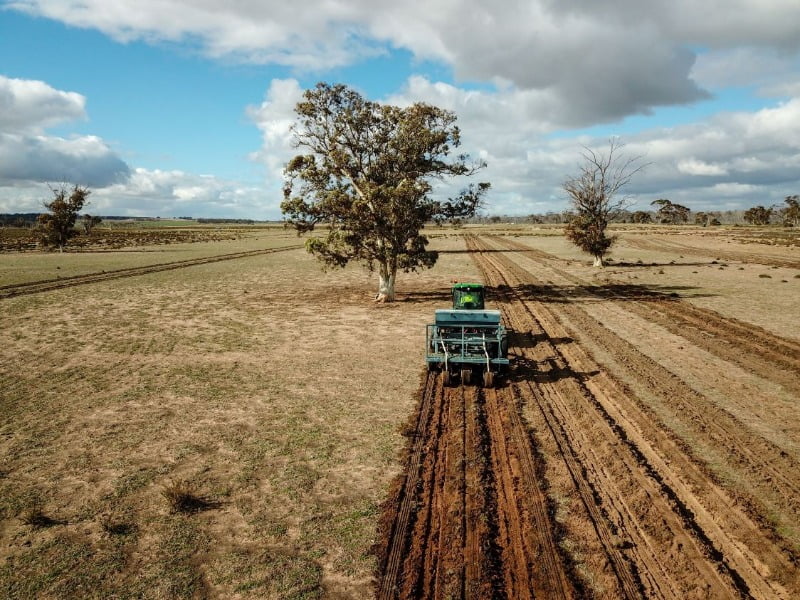Periods of turmoil, just as we are experiencing now, are never easy. But they are also a major catalyst for innovation. We’ve seen this with the unveiling of Angus Taylor’s technology roadmap, prioritising major technology innovation within the energy sector in the effort to reduce Australia’s carbon emissions.
While land-based solutions like carbon abatement may form a part of this solution, it poses the question as to what might be possible if we were to see far greater investment in the conservation sector, applying the same appetite for innovation and scalability to solve these problems. To do this though, perhaps our sector needs to be viewed a little differently.
As we embark on the huge task that we face as a nation following the devastating bushfires, and of course a global pandemic, the environmental sector must work with other sectors as a collective on new solutions and new ways of operating.

To do this we need the motivation from government and big business to drive this shift. Disruption is necessary, just as we’ve seen it in other industries.
The case for disruption
Until now, the not-for-profit sector has taken on a large chunk of the responsibility in protecting and restoring Australia’s landscapes, and government grants alongside philanthropy typically play a central role in carrying out vital projects at scale.
But in the last few years, especially as a result of the bushfires, we’ve seen a growing appetite from business to reduce their own carbon footprints and invest in large-scale environmental work.
As a result, we are now seeing government play the role of cornerstone investor, laying the foundations for different sectors to help drive change themselves, and see environmental, social and economic returns.
For the private sector, investing in the environment can be an attractive proposition, not only by being a part of the climate change solution, but by gaining financial returns through environmental markets.
Tapping into these large pools of non-government capital has created an unprecedented pipeline of opportunities to make a real difference, and future-proof the sector with new funding sources. But now our capacity to deliver on that investment needs to grow too, and we can no longer rely on the status quo to get things done.
We need to set the ball rolling ourselves, and find new, more efficient ways to protect the planet.
Cross-sector collaboration
In the financial world, the past decade has seen a huge wave of innovation from smaller startups and entrepreneurs who are using technology to improve access to financial services and literacy, accelerating and securing the way we transact, invest and spend.
A similar level of disruption in the conservation sector is the only way forward.
As a sector, we need to be looking as far as Silicon Valley – the capital of the climate change economy – to partner with technology’s biggest innovators. Out of these collaborations will come new ways of thinking, new ways to deploy investment, and new ways to be able to harness the best new technology, talent and machinery to continue to restore landscapes at scale, whilst delivering an economic return.
Already, we’re seeing successful trials of eco-tech projects that would once have taken months of physical labour and philanthropic support to complete by hand.
The Australian government has wholly embraced the need to bridge our ‘native seed deficit’ by recently investing $5 million in the development of a national seed strategy on the back of last summer’s bushfires. For example, this will see us building smart seed hubs that disrupt the time-consuming way manual seed collection has traditionally taken place.
We are also are developing online portals that will help drive capital to on-ground projects much more efficiently. These platforms will connect land managers across Australia to market-based instruments and investment opportunities that do something positive for the environment but also provide an economic return to their enterprise, such as carbon and water quality credits.
Symbiotic vision is imperative
People and nature can thrive on a much larger scale if we can unlock new, innovative, disruptive solutions together – as communities, as members of an economy, as businesses and as elements of a living, breathing ecosystem.
For most industries, this kind of disruption is triggered by external pressures such as increased competition, or consumer demand. For the environmental sector, while the demand for better capability is coming first and foremost from the earth itself, it’s also coming from our new economic beneficiaries, whose investment can lead to real returns.
James Atkins is Chairman at Greening Australia, an environmental enterprise working with landowners, communities, governments and businesses to undertake large scale ecosystem restoration to capture carbon, improve water quality and make our land more productive.
Do you know more? Contact James Riley via Email.
